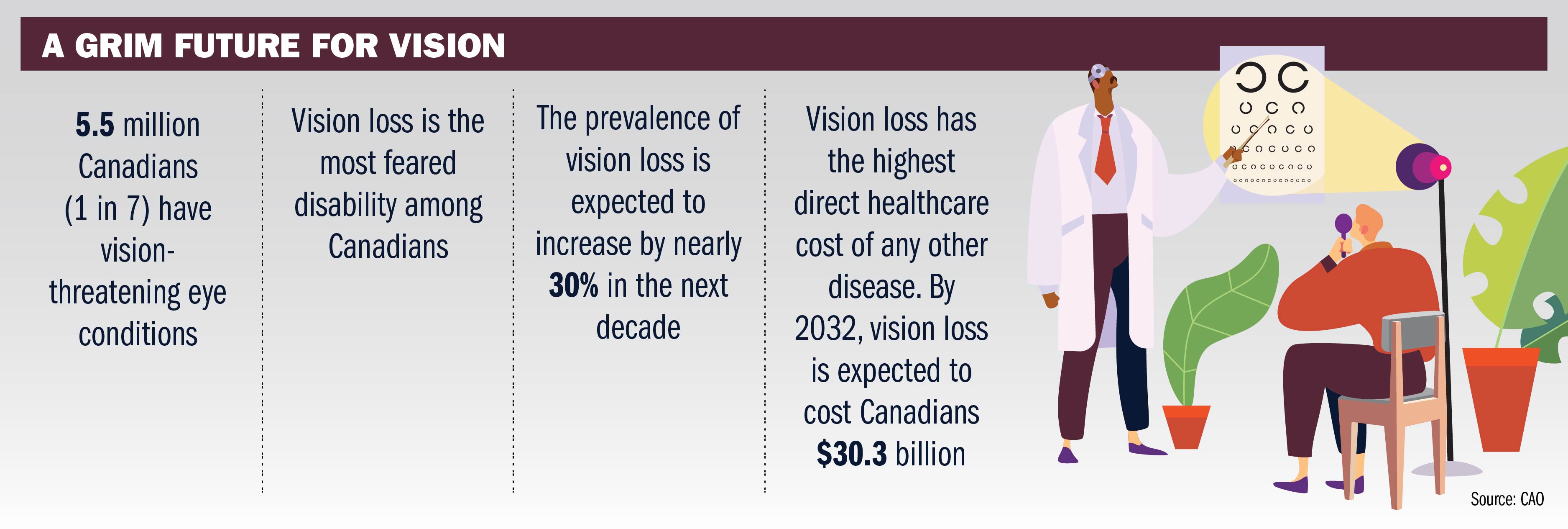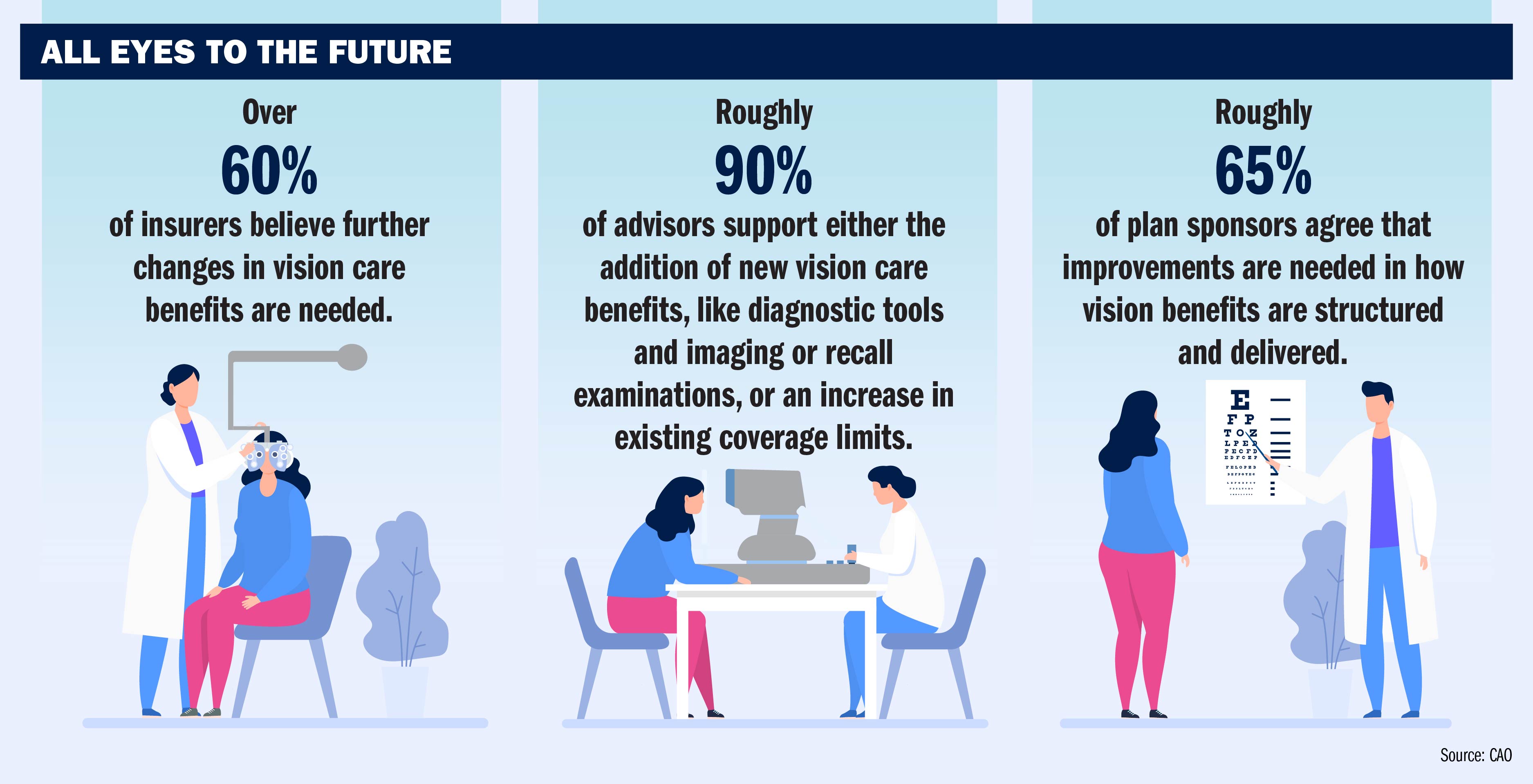'Most benefit plans haven't evolved to reflect how crucial eye health is to overall wellness and workplace productivity', says Medavie Blue Cross' Paula Grossman

Benefits and Pensions Monitor is pleased to present a vision care special. In this first special, we explore the gaps in vision benefits and how eye disease is affecting workplace productivity with Medavie Blue Cross and Beneva.
When it comes to vision care, the benefits landscape in Canada is stuck in the past.
Several benefits providers assert that insurance plans still treat vision benefits like a simple subsidy for eyeglasses or contact lenses, rather than a proactive tool to protect eyesight and reduce long-term health costs, particularly eye disease.
“Vision care benefits in the insurance industry are pretty outdated across the board,” said Paula Grossman, health benefits consultant at Medavie Blue Cross. “Often, vision benefits are perceived as a prepaid benefit plan for glasses, rather than what it could be, which is comprehensive coverage aimed at preserving vision, diagnosing eye disease early, and addressing impairments or preventing disabilities at an early age."
She asserted that most plans haven’t evolved to reflect how crucial eye health is to overall wellness and workplace productivity. Grossman believes that plan sponsors are falling behind, particularly when it comes to people with chronic vision conditions like dry eye disease, which has surged in recent years due to increased screen time.
“Canadians’ eye health is under increased strain due to the combined effects of aging and prolonged screen time,” emphasized Grossman. “And the cost of eye exams has been rising significantly as optometrists are investing in a lot of new technology.”
Additionally, most people don’t interpret dry eye disease as an eye disease, Grossman emphasized, noting that the average person might dismiss it as a minor annoyance, rather than the productivity-sapping condition it is.
“They don't necessarily understand how debilitating that could be.”
Despite its impact, treatment options such as LipiFlow or follow-up diagnostics remain out-of-pocket expenses for most employees.

Sunil Hirjee, vice president of group sales and partner experience of Ontario, Western, and Atlantic Canada at Beneva explained prescription lenses, glasses, and, in some cases, laser surgery are typically covered under benefit plans because they fall within the scope of eligible medical expenses as defined by the Canada Revenue Agency.
However, products like eye drops, even if used for conditions like screen-related dry eye, are excluded from coverage since they don’t qualify as health expenses under the Income Tax Act. That said, Hirjee emphasized employers have options, but they may need to use taxable spending accounts.
Insurers now offer flexibility through healthcare and personal spending accounts, though that still places the onus on employers to take action.
“Even if items aren’t covered under a traditional health benefit or vision care benefit, I would say the avenues exist nowadays for plan sponsors to use spending accounts to augment the coverage that might exist and to provide flexibility to address diverse needs,” said Hirjee.
There’s also a troubling mismatch between the cost of advanced care and the coverage limits. Optometrists are investing heavily in new technologies to catch diseases early, but these costs are bundled into increasingly expensive eye exams that remain under-reimbursed.
“Current best practices in vision care include the use of advanced technologies, and those are often built into the comprehensive eye exams,” Grossman said, noting that people over 40 may require multiple follow-up appointments to monitor conditions but these costs aren't often reimbursed under standard plans.
She pointed to the Canadian Institute for Health Information (CIHI)’s 2016 national health expenditure trends, which found approximately 74 percent of private vision care expenses were paid out of pocket, compared to 37 percent for prescription drugs and 44 percent for dental services.
This short-sightedness has consequences for both plan members and employers, leading to poor vision and affecting workplace safety, absenteeism, and presenteeism, all of which are costing employers more than they may realize.
“Expanding vision care coverage can serve as a competitive advantage in attracting and retaining top talent, as vision benefits are highly valued by employees, second only to dental coverage,” noted Grossman.

Grossman highlighted that Medavie Blue Cross recently updated their offerings to better reflect modern clinical practices. These include separate coverage for follow-up exams, higher maximums for multifocal lenses, and even benefits for visual training therapy, especially in cases like concussion recovery and vertigo.
She also emphasized the growing need for coverage around intraocular lens implants, procedures that were once confined to cataract patients but are now increasingly sought after by individuals who’ve undergone laser eye surgery.
“We’re seeing more and more requests for people who have had laser eye surgery asking for the lens implant coverage as well,” she said.
Still, both Grossman and Hirjee point to a consistent challenge: eye care isn’t seen as urgent.
“It’s not a hot topic,” Grossman said. “Employees have access to some coverage, and it’s so few people who have that greater need, and they don’t necessarily make a lot of noise.”
Hirjee echoes that view.
“From our perspective, there are a lot of other categories of health coverage where that demand is being seen quite frequently,” he said. “What has slightly changed are augmentation options, but they’re not direct vision benefits.”
Grossman noted inadequate vision care coverage has the potential to drive up drug claims, increase disability leave, and even lead to premature retirement.
“We believe it’s important to invest in prevention, because if left unmanaged, advanced stages of eye disease can negatively impact benefit budgets,” she said. “Vision care is one of the top health benefits... Just give it a little attention,” she added.



